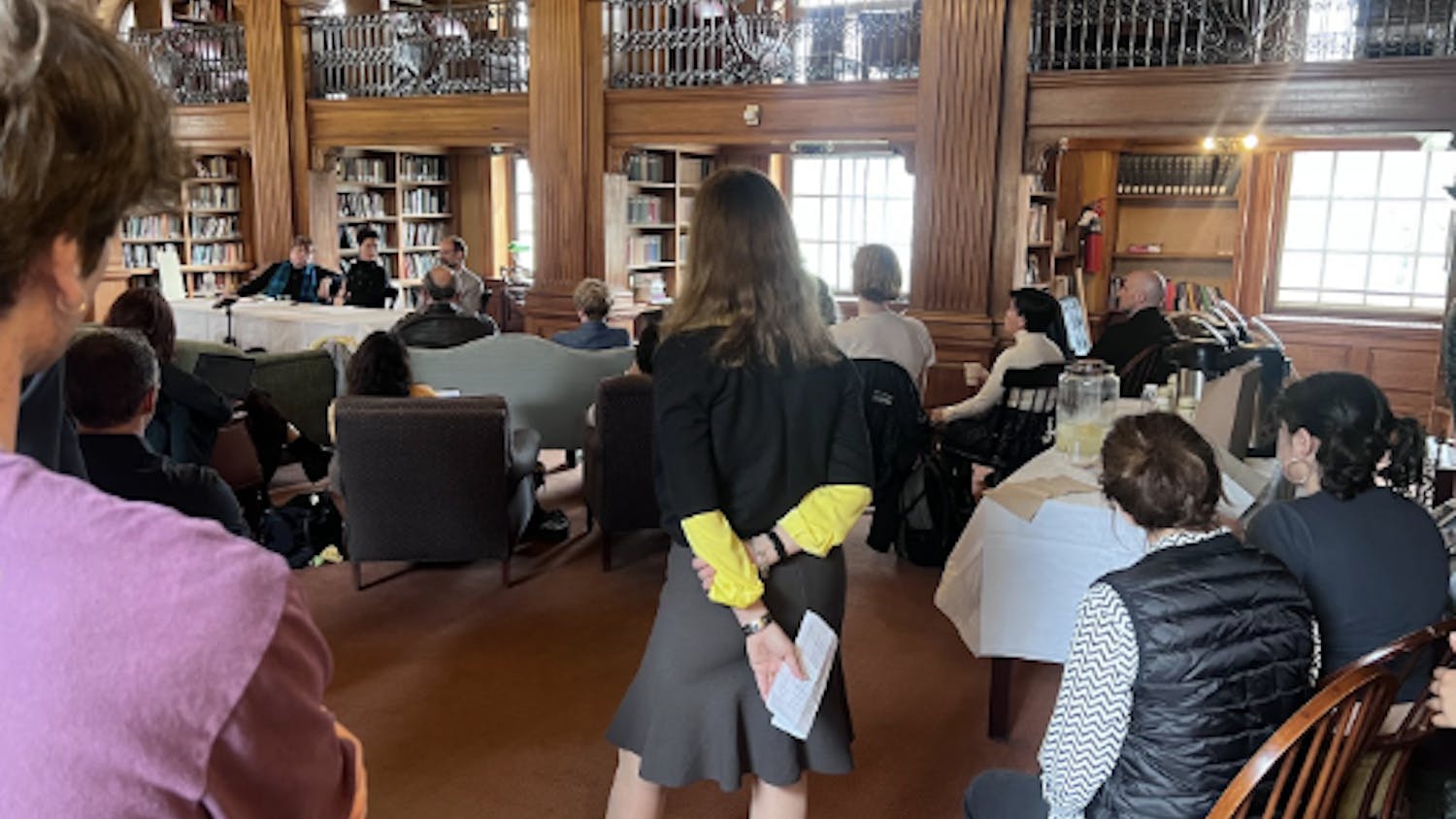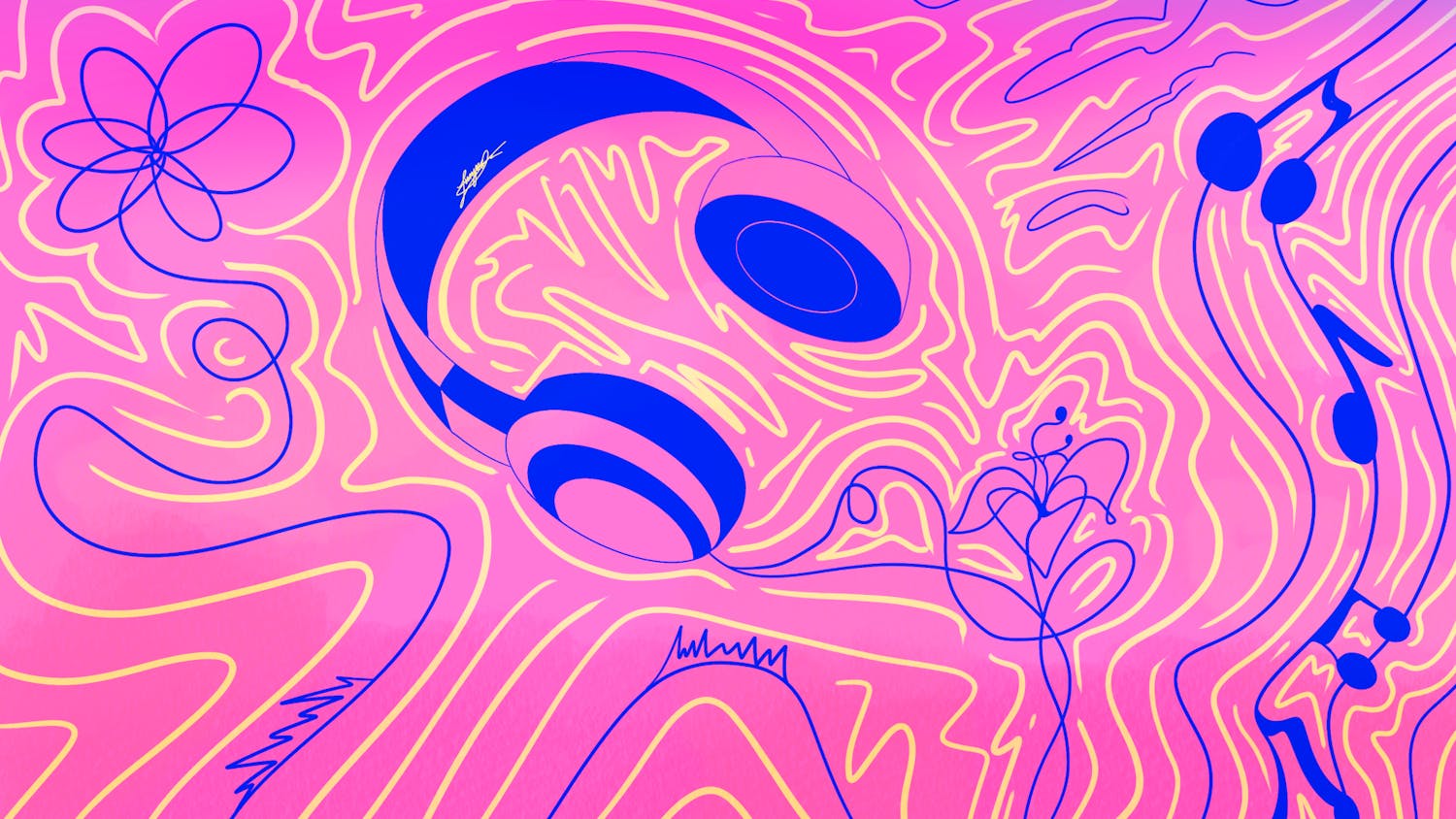Gar Waterman ’78 is a Connecticut-based sculptor known for his large public sculptures. He typically works in stone, bronze, wood and glass, and his sculptures are often inspired by the natural world, especially sea life. Waterman installed “Feral Seed,” a sculpture, in the atrium of the Life Sciences Center in August.
Can you talk about “Feral Seed”?
GW: Well, seed forms have been a source of inspiration for me for years. I do a lot of sculptures of seeds. I’m very attracted to their mysterious qualities, and of all the bits and pieces of all these different life forms within them that wait for the right moment to germinate.
Seeds have a lot of symbolism in our language. You can have some wonderful metaphors there — seeds of destruction, seeds of hope, seeds of misery — anything you want to put in there. The shapes appeal to me a great deal. They’ve been something I’ve worked on many times, in all my different types of media, and I just thought that given that this is a “life sciences center,” a seed would be an appropriate source of inspiration for a sculpture to go in there.
How was it installed?
GW: The installation process was pretty straightforward. It was all planned out ahead of time, and it was really just a question of engineering and making sure we had the proper suspension, the cables, that kind of thing. The real monster was the pulling of the sculpture itself, which is a waxed, bronzed casting. It was quite a complicated and time-consuming process.
Did you sculpt as a student here?
GW: I took one art course at Dartmouth, which I loved, with [Thayer Engineering School professor] Peter Robbie [’69], who still teaches there. He’s a wonderful sculptor who teaches at the engineering school now. Sadly, the time that I was at Dartmouth I wasn’t clear about what I wanted to do with my life, so I didn’t take further advantage of the really great art department we had. Some of the best times I had when I was at Dartmouth were working down at the shops underneath the [Hopkins Center]. I was not self aware enough at the time to really know what I wanted to do but work with my hands. That didn’t come until I left school, was out in the big, bad world for a few years and found my way.
What did you make at the Hop?
GW: I started there for a project for Robbie’s course, and then enjoyed it so much that I continued on one on my own, making some things in the woodshop and metal shop there. It was the instructor there, who ran the metal shop and took a quiet liking to me, and ended up, to my great surprise and pleasure, giving me a Marcus Heiman Award when I graduated, which couldn’t have surprised me more. It was a delight and a very nice acknowledgement of something that I wasn’t really even thinking about. Certainly given my life, it has been about making things.
Where do you find inspiration?
GW: I would say my inspiration comes from nature. Pretty straightforward — I generally take different bits and pieces that I am interested in, including seeds. I love insect forms, beetle exoskeletal forms.
A lot of my work is inspired by the underwater world. A lot of my childhood was spent diving with an underwater filmmaker father, so that had a lot of influence on me over the years. “You are what you eat” as an artist, and what I ate as a kid was diving underwater, so it comes out a lot in my work.
What aspects of Dartmouth did you most enjoy?
GW: Well, other than the great friends that I still have from that time, I was pretty clueless at the time. I was not mature enough to fully appreciate the privilege of going to that place. Which is not unusual, I know. I was guilty of that, unfortunately.
But I would have to say, my time in the shops. I didn’t know it at the time, but in retrospect, we were all supposed to go there and find something in that school — willy nilly, a bit or a piece here or there. Some of you guys are so far ahead of the game, and you know what you want, but I didn’t. Despite that, I still found my way into the shops, and I loved that. I was not a terribly good student, or a terribly diligent student, I’m afraid. I went to a pretty challenging prep school and probably worked harder there than I ever did at Dartmouth.
But it’s funny how things work out, and the pieces I took away from that school have served me very well. There is a real place in my heart for it. This sculpture I did for the Life Sciences Center has really served as a wonderful, productive process for me, because I feel like my time at that school was not well taken advantage of. I’m so delighted to be able to be given the chance to do something that’s really a very strong piece of myself, that’s really me. That sculpture is very much my style and form, so I’m fortunate to be able to make amends for not knowing enough when I was an undergrad and not taking enough of what that school had to offer.
Do you have advice for students pursuing a career in the art?
GW: Only what I tell most people who ask me about a career in the arts, which is you need to be in it for the long run, and if you want it enough, you will find a way to do it. A career in the arts is not for the faint of heart. It’s a very difficult world to make a living in, and I’ve been pretty lucky and lived pretty close to bone for many years. But I survived doing my work, and I don’t teach. This is what I do. In the art world, that’s huge success. If you can just survive, that’s huge success. You have to find your own voice, which takes time, and your expectations have to be extremely moderate.
This interview has been edited and condensed.



